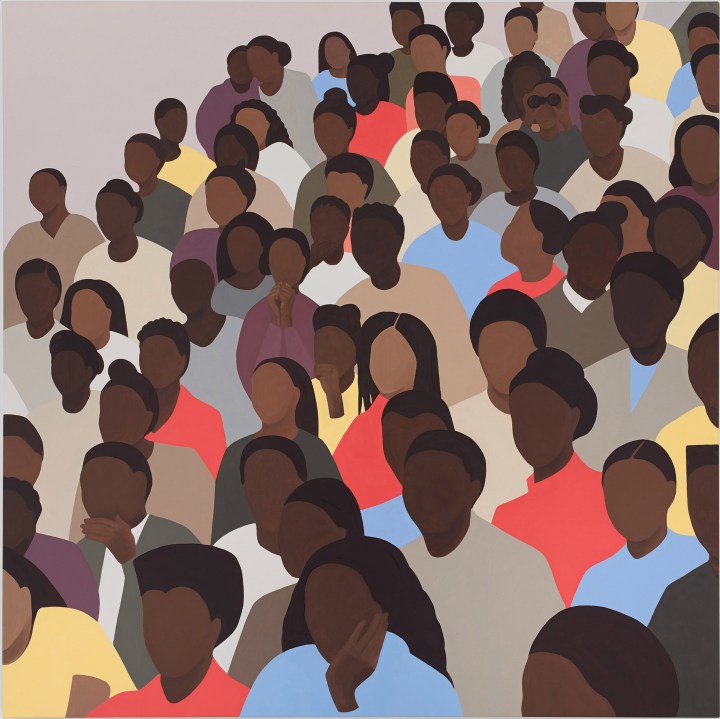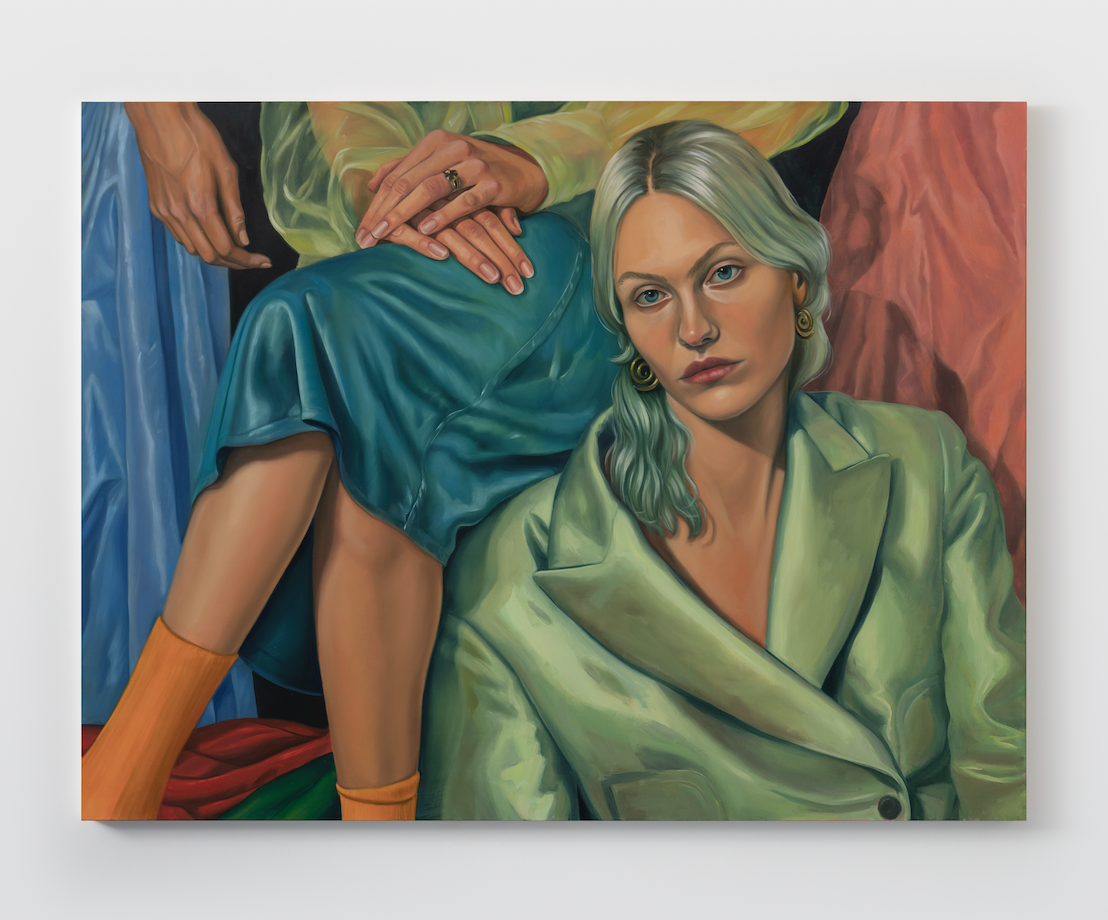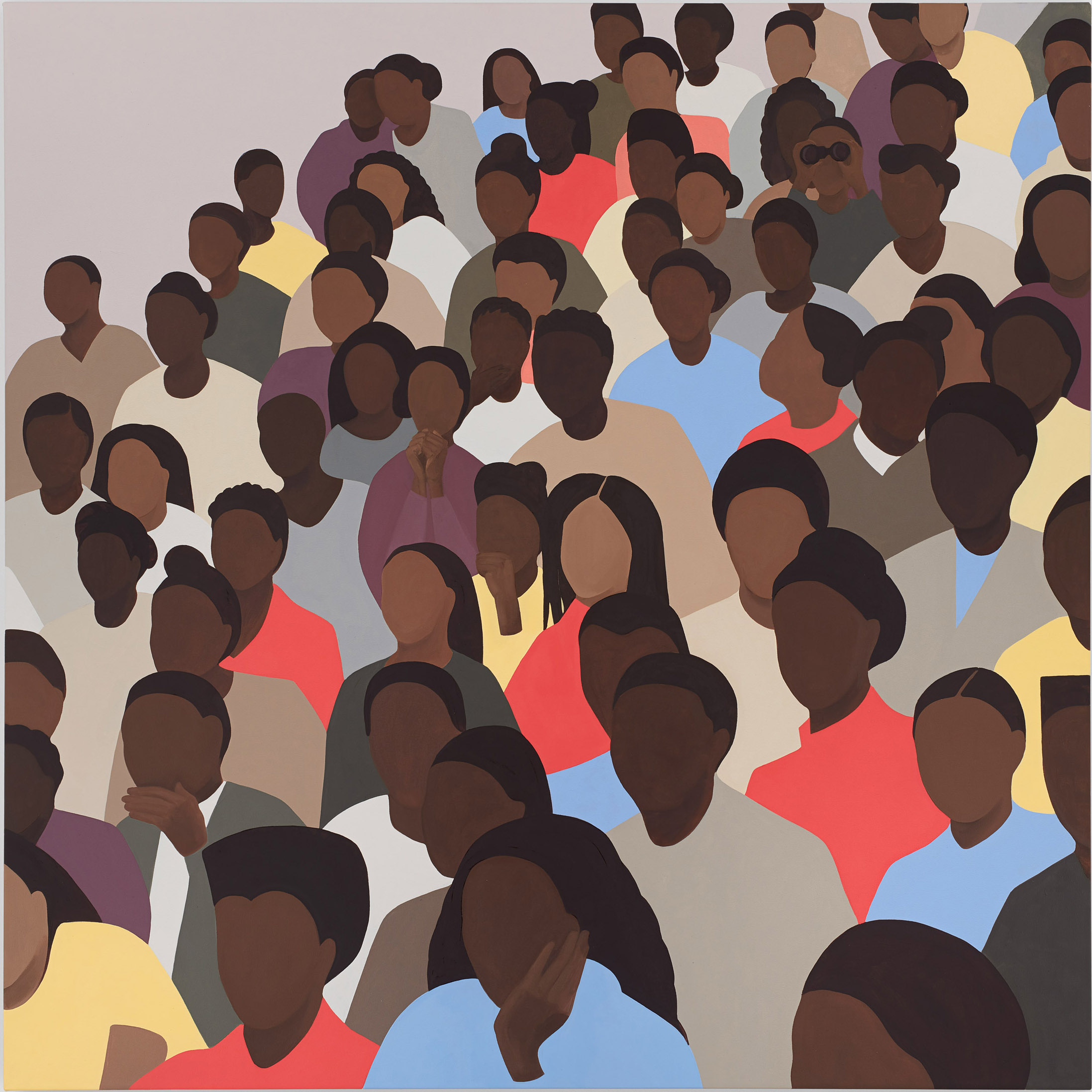ART
In art: Remembering what social life looks like

A selection of five pictures, each representing groups of people and gatherings, provides an opportunity to think about what was so good – and a little less good – about our social life.
When were you last in a big group of people? How does it feel to remember that now? What stands out? Maybe it’s the physicality of other bodies around you, warm and moving and alive. Perhaps it’s the sounds of sociality, voices on top of each other, making the irregular music of conversation.
Possibly it’s the emotions, the way other people’s feelings, ultimately unpredictable, register through facial expressions, body language and tone of speaking. Or it could be the smells, the variety of scents from everyone’s perfumes, hormones, workout schedules and preferred soaps.
On that note, when was the last time you smelled someone new?

Grand Street Girls, Mimi Gross (1963), Oil on canvas, 152 cm x 178 cm
This question comes to mind looking at this wonderful group of New Yorkers painted by Mimi Gross, 23 at the time, a young artist in America’s busiest city. She emphasises the 11 women’s chic and dazzling outfits, a quintessential expression of the modernist fervour of the moment when it was all about pop and colour and new-new-new! Dressed to impress in their brightest florals and boldest patterns, it seems – to this writer at least – likely that each had spritzed a striking scent before their modelling session in bustling Lower Manhattan. Take a moment to imagine the range of perfumes… Doesn’t the central, smirking figure wear something bright and citrusy? This is the power of art: allow our imaginations to roam free and “feel” the experience in ways we can all relate to differently.
Aside from bizarre but endearing Zoom happy hours and social media flexes, most people aren’t dressing up these days. This painting, dazzling with colours and pattern, reminds us what it was like to dress up and “look nice” for friends, for colleagues, for the world. Imagining what the women might think of each other’s outfits as well as each other, one looks at the figures more closely and a new mood comes into view. Indeed, many of the faces are straight and stiff, the women are arranged together but disconnected, distant even. There is something forced and awkward about this group. It’s worrying, as if something is about to happen, another clue for our fertile imaginations.

The Tedious Matter of Personal Will, Chloe Wise (2019) Oil on linen, 208.5 cm x 157.5 cm
Chloe Wise’s portrait feels like a close-up of this social disjuncture. Like Gross, the 29-year-old Canadian artist often paints her peers, proxies of her own experiences. Surrounded by swirls of jewel-toned fabric, the vibrant outfits of her own friends, a green-haired woman stares out at the viewer. Her gaze is bored and tired, she doesn’t want to be there. She seems more connected with us than the cut-off figures around her. She has plenty of company yet she is totally alone.
And just there, in the distance of her eyesight, lies the worry. Will this be a familiar scene when isolation ends? After months of social distancing, what will the return of the friend-group feel like? Will we embrace each other easily and with relief? Can we still interact normally? Or will we be overwhelmed by the presence of others and the weight of time apart? Perhaps we, like this sulky figure, will feel alone together, trying to connect across an unprecedented gap.
Maybe this is an overreaction, this writer’s own introverted neuroses worrying over nothing. But we are experiencing a world-changing global event after all; human sociality might look very different once we all emerge from isolation.

Untitled (Group Hula Hoop), Tyler Mitchell (2019) Photography, dimensions variable
An image by 25-year-old Tyler Mitchell, a photographer based in Brooklyn, helps make sense of our current moment of connection across distance. For a still picture, the sense of movement is incredible. Seven hula-hoopers are captured mid-spin on the sports courts of a public park. The markings and cracks on the sun-soaked court break the picture up into sections of colourful rings and circular shadows that keep the eyes looping around the frame. This dynamism extends through the bare and outstretched arms of the figures who are doubled in silhouettes on the ground; together the group stirs up the picture, the uniform yet individuated actions creating a sense of cohesion among the group.
As the nation begins to stretch its limbs outdoors during state-restricted exercise periods and physical distancing remains the strategy of choice to control the spread of Covid-19, Mitchell’s photo takes on new resonances that the photographer could never have predicted. The spacing out of the subjects and the plastic rings that encircle them are an apt visual metaphor for our current moment. The hula hoops feel like the more visible social-distance we now all need to respect, the borders on a Zoom call and the walls of our houses, firm boundaries in which we must be contained, even as we try to keep spinning to stop things from falling to the ground. But we are moving together, even if kept apart.

Audience, Thenjiwe Niki Nkosi (2020), Oil on canvas, 150 cm x 150 cm
South African-American painter Thenjiwe Niki Nkosi captures this sense of unity in her arresting composition of dozens of spectators which exists between abstraction and figuration. She has created a busy pattern of flat colour patches in a range of browns and neutral tones with pops of coral, pastel yellow and sky-blue; the crowd becomes a singular form with no individual standing out. In spite of their facelessness, their nervous anticipation is clear. They lean in, their attention fixed on a spectacle outside of the frame. Some hold anxious hands to their faces, one figure even holds a pair of binoculars to his unpainted eyes, intent on seeing every detail. The group is watching gymnastics (the theme of Nkosi’s current exhibition available online at Stevenson Gallery) but this painting leaves space for the viewer to imagine any type of captivating spectacle.
It’s easy to identify with the audience, to insert oneself among an unidentified mass watching the world battle Covid-19. These days it is hard to look away from the news which is alternately dreadful, inspiring, hopeless, and mundane. It seems with every development we take a collective breath, reform our opinions, and lean in for a closer look at the crisis. Despite the physical distance, we are a crowd during the pandemic, unified around a common experience, moving and feeling through uncertainty together.

Los Borrachos (The Triumph of Bacchus), Diego Velásquez (1626-1628) Oil on canvas, 165 cm x 225 cm
Perhaps it would all be easier with a drink: Known as “the drunks”, this vivid scene by Velásquez, master of the Spanish Baroque, may represent the fantasy of many South Africans thirsting for government-restricted booze. In the painting a group of peasants are visited by Bacchus, the Roman god of wine. He glows, sitting atop a barrel of the good stuff, sharing his plentiful supply between earthly and divine company. A closely gathered group of men occupy the right half of the painting while Bacchus’ goat-human followers, satyrs, fill the left. The landscape in the background is minimal and unremarkable; the characters tell the story in this picture.
Each person adds detail to the narrative: the lounging satyr, raising his glass elegantly, stares adoring at his master; two lads in the corner exchange nods and smiles, as if they can’t believe this blessing; and the grinning man at Bacchus’ right side stands out, grabbing the viewer with his direct gaze and inviting us to join the revelry before taking a ready sip from a generous bowl of wine. This painting is like the end of a good party, in the wee hours when the music is lower it seems like the greatest idea to pour just one round and start crowning your mates. The mood is light, the alcohol has put everybody at ease, intimacy unhindered by sober inhibitions. Maybe that’s all the ladies painted by Mimi Gross and Chloe Wise need to break the tension…
It will be a long time before groups can gather again, before we can have raging parties or fill stadiums. Looking at these and other group pictures helps us visualise what many of us, even the introverted, are missing right now: the buzz of sociality, of real-life community and company. As we continue to stay home, we can live vicariously through these artworks and be confident that we shall be together again one day; it’s how life is meant to be. DM/ML

















 Become an Insider
Become an Insider